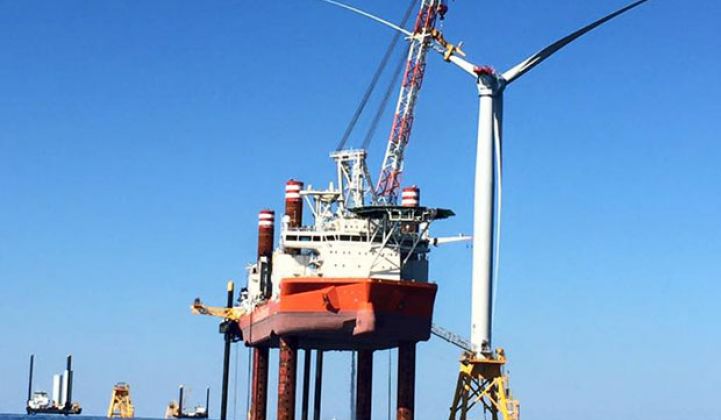On Monday, Deepwater Wind announced it’s asking Tesla Energy to supply a 40-megawatt-hour battery system to help turn a proposed 144-megawatt Revolution Wind farm off the Massachusetts coast into a dispatchable energy resource.
It’s by far the biggest battery meant for an offshore wind farm. It dwarfs the 2-megawatt lithium-ion system Dong Energy plans to build at a 90-megawatt wind farm by year’s end, and the 1-megawatt-hour battery Statoil plans to build next year to support its 30-megawatt Hywind wind farm.
But the economics of the Deepwater-Tesla proposal are also significantly different. Those European projects are focused on frequency regulation -- an application that allows for their relatively small proportion of energy storage capacity to generation resource.
In Massachusetts, by contrast, Tesla’s batteries would be called upon to help shift megawatt-hours' worth of energy production to times of peak demand.
The March request for proposals (PDF) from the Massachusetts Department of Energy Resources and the state’s investor-owned utilities requires that projects “contribute to a reduction in winter electricity price spikes,” when rising demand for heating electricity, combined with cold-related power plant problems, can drive emergency-level imbalances like those of the 2014 polar vortex.
DOER defines its winter peak season as 8 a.m. and 11 p.m., Monday through Friday, between the months of December and February. Bidders responding to the RFP must guarantee delivery during those peak winter months, as well as when regional grid operator ISO New England calls an emergency event.
Winter is a season of high winds, but it’s also a season when storms can force wind farms to curtail operations. Building 40 megawatt-hours of storage for a 90-megawatt resource can be seen as an insurance against failing to meet the terms of the RFP.
“These hours are very valuable to the grid,” Deepwater CEO Jeff Grybowski told Bloomberg, adding, “The batteries will ensure that we do that.”
Deepwater Wind, developer of the first U.S. 30-megawatt offshore wind farm off the coast of Rhode Island, would build the new battery-backed wind farm adjacent to its existing 90-megawatt South Fork Wind Farm, which serves Long Island.
New Bedford, Massachusetts would serve as the assembly and construction hub, with power delivered to the state’s big utilities, National Grid and Eversource. If approved, the project could begin construction in 2022, and be up and running by 2023.
The proposal is competing with several transmission line projects to carry hydro and wind power from Canada. Deepwater has also submitted proposals outlining a 288-megawatt version and a 96-megawatt version of Revolution Wind without energy storage.
The big question is how the cost of 40 megawatt-hours of Tesla batteries balances out against the value of meeting the RFP’s winter peak season requirements, relative to storage-free alternatives.
Deepwater, which is also working on projects in Maryland and New York, hasn’t revealed the financial details of its competing bids to provide an answer.
Even bigger offshore wind-plus-storage projects are in the concept phase.
The North Sea Wind Power Hub, a transnational utility proposal to build an artificial North Sea island to support up to 100 gigawatts of new wind farms, is considering power-to-gas energy storage. The facility would use excess wind power to produce hydrogen, and then methane, to feed into the sea’s extensive natural-gas pipeline system.



